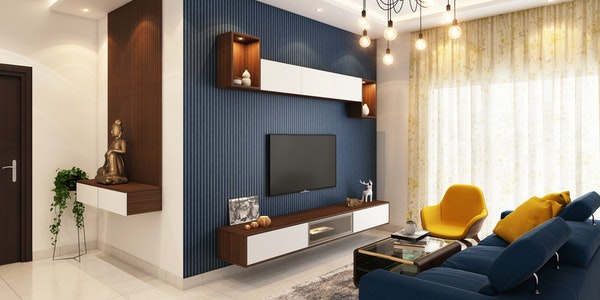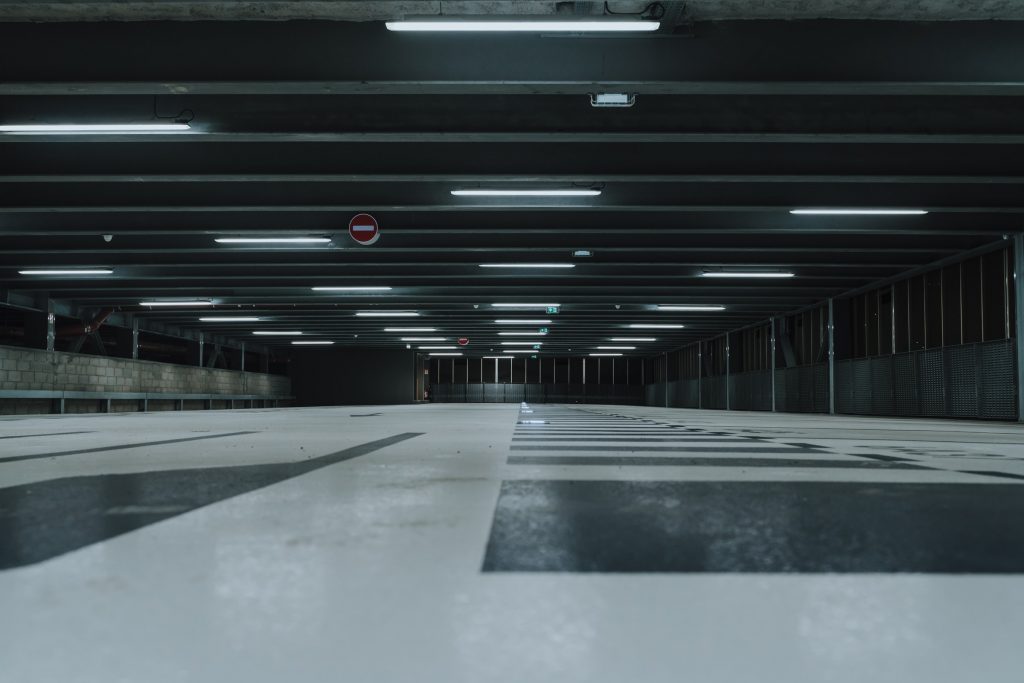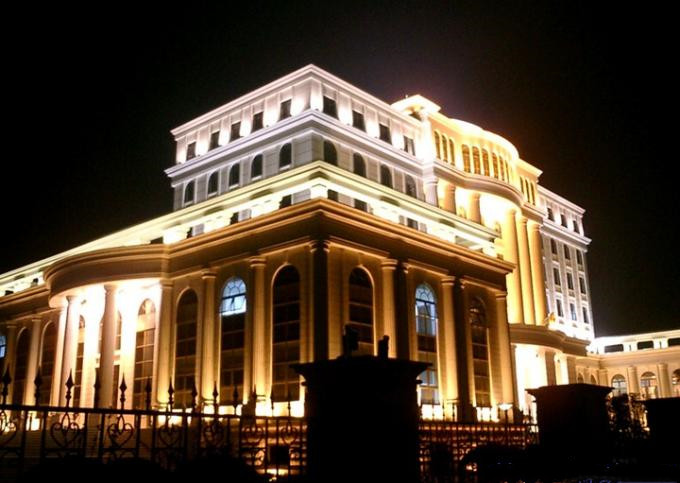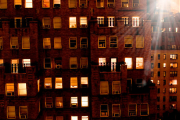Working Conditions
(1) Do a good job of pre-embedding during structural construction. Bolts should be pre-embedded in the concrete floor, and hangers should be reserved in the hanging items.
(2) The mouth of the box is repaired, and the wooden table and board are painted.
(3) Templates and scaffolds that have an impact on the installation of lamps and lanterns have been removed.
(4) The ceiling, wall plastering work, interior decoration sizing work and ground cleaning work have all been completed.
Operation Process
(1) Process flow: check lamps → assemble lamps → install lamps → power on operation
(2) Lamp Inspection:
1) According to the installation site of the lamps, check whether the lamps meet the requirements. Explosion-proof lamps should be used in flammable and explosive places; closed lamps should be used in places with corrosive gas and characteristic humidity, and all parts of the lamps should be treated with anti-corrosion treatment.
2) Outdoor luminaires should be enclosed luminaires with drain holes;
3) Except for the open type, all types of lamps with a bulb capacity of 100w and above should use porcelain sockets.
4) Inspection of wiring inside the lamp: The wiring inside the lamp should meet the design requirements and relevant regulations; the wires passing through the light box must not be subjected to additional stress and wear at the branch connections, and the ends of the multi-strand cords need to be coiled and tinned. The wires in the light box should not be too close to the heat source, and heat insulation measures should be taken. When using a screw lamp, the phase wire must be pressed on the lamp stem,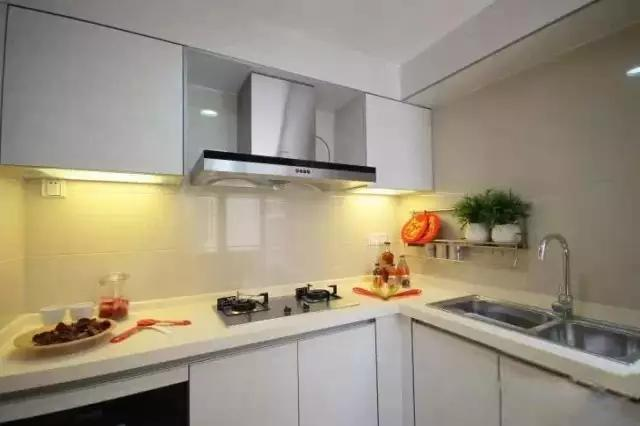
5) Inspection of characteristic lamps: the indication directions of various signs are correct; emergency lights must be sensitive and reliable; emergency lights must have characteristic signs; transformers for local lighting must be double-turn, and both primary and secondary stages should be equipped with fuses;
(3) Lamp assembly
1) Assembly of the combined ceiling lantern: first lay the pallet of the lamp flat. If the pallet is assembled from multiple pieces, all the frames must be aligned and fixed with screws to connect them together. Then install each lamp socket according to the manual and schematic diagram.
Determine the position of the outlet and routing, and fix the terminal board (porcelain connector) on the support board with screws. Pinch the wire according to the distance from the fixed terminal board (ceramic connector) to each lamp socket, and strip the pinched wire out of the core. After winding the circle, rinse the tin. Then press into each lamp socket to straighten out the phase line and neutral line of each lamp cap. Use wire clips to fix them separately, and press into the terminal boards according to the power supply requirements.
2) Ceiling lantern assembly: First, thread the wires from each lamp port into the junction box of the lamp itself, and press one end into each lamp port after coiling and tinning. Straighten out the phase wires and neutral wires of each lamp holder, connect the other ends according to the phase sequence after tinning, wrap up and throw out the power lead-in wires, and finally pass the power lead-in wires out of the boom.
(4) Lamp installation
1) Ceiling fluorescent lamp installation:
Determine the position of the fluorescent lamp according to the design drawing. Place the fluorescent lamp close to the surface of the building. The lamp box of the fluorescent lamp should completely cover the lamp holder box, and the wire inlet hole should be made in the position of the lamp holder. Lead the power cord into the light box, and put a plastic tube on the inlet hole to protect the wire. Find the position of the screw hole of the lamp box, drill the hole on the bottom plate of the lamp box with an electric drill, tighten it firmly with a screw, and fix it with an expansion bolt at the other end of the lamp box.
If the fluorescent lamp is installed on the ceiling, the light box should be fixed on the keel with self-tapping screws. After the light box is fixed, press the power cord into the terminal board (ceramic connector) in the light box, fix the light board of the lamp on the light box, adjust the light box straight, and finally install the fluorescent tube.
2) Installation of various types of lanterns:
i. Installation of combined ceiling lantern:
According to the positions of the embedded bolts and the lamp head box, use an electric drill to open the mounting holes and outlet holes on the pallet of the lamp. Hold up the pallet during installation, connect the power cord and the lead from the lamp to each other and wrap it tightly, and put the lead into the lamp holder box as much as possible. Then align the mounting holes of the pallet with the embedded bolts so that the sides of the pallet are tightly attached to the ceiling, and tighten them with nuts. Adjust the lamp sockets, hang various decorations of the lamps, and install the lamp tubes and bulbs.
ii. Pendant lantern installation:
Hold up the lamp, insert the pre-embedded boom into the lamp, insert the hanging pin and break the tail into a dovetail shape, and flatten it. Connect the wire to the head and wrap it tightly. After straightening out, push up the buckle bowl on the upper part of the lamp, buckle the connector inside, and close the buckle bowl to the ceiling, and tighten the fixing screws. Adjust each lamp port, install the bulb, and finally install the lampshade.
iii. Installation of the light strip:
Determine the support point of the bracket according to the external size of the lamp. After careful calculation according to the specific weight of the lamp, the profile of the bracket is selected to make the bracket. After it is done, fix the bracket firmly with embedded parts or expansion bolts according to the installation position of the lamp.
The bracket of the light fixture can be directly fixed on the main keel. For large light strips, the embedded parts must be installed first, and the brackets of the light strips must be fixed on the embedded parts with screws. Fix the bracket, fix the light box of the light strip on the bracket with screws, and then introduce the power cord into the light box to connect with the wire of the lamp and wrap it tightly. Adjust the lamp sockets and lamp feet, install the bulb or tube, and put on the lamp cover. Finally, adjust the frame of the lamp to be parallel to the decorative line on the ceiling surface. If the luminaire is installed symmetrically, its longitudinal center axis should be on the same straight line, and the deviation should not be greater than 5mm.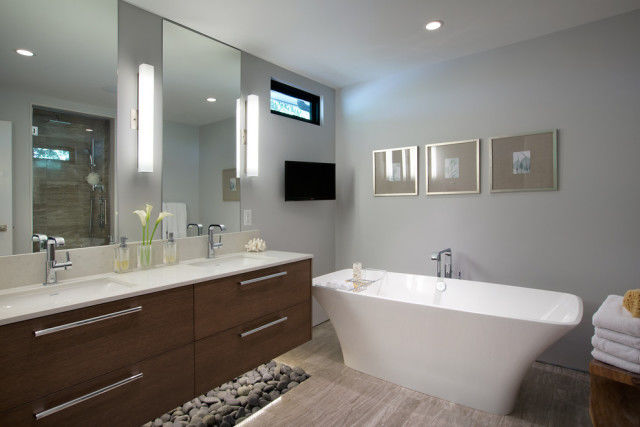
iv. Wall lamp installation:
First select the appropriate lamp base according to the appearance of the lamp and place the lamp on it, and the margin left around should be symmetrical.
Then use an electric drill to open the outlet hole and installation hole on the base, and open the installation hole on the bottom plate of the lamp. Throw the lamp cap wire of the lamp out of the outlet hole of the base, connect it in the lamp cap box on the wall, and wrap it tightly, and stuff the connector into the box.
Align the base to the lamp holder box and close it tightly to the wall. Use screws to fix the base directly on the ear of the box. If it is a wooden board, use an expansion tube to fix it.
Adjust the bottom bracket of the lamp so that it is flat and not skewed. Then screw the lamp onto the bottom bracket of the lamp with screws, and finally match the bulb, lamp umbrella or lampshade.
For wall lamps installed outdoors, waterproof rubber pads should be added between the table board or the bottom bracket of the lamp and the wall, and drain holes should be made.
- DC 36V and above lighting transformer installation:
If the transformer adopts double coils, autotransformer is not allowed, and the primary and secondary should be connected in two boxes respectively. The power supply side should have short-circuit protection, and the rated current of its fuse should not be greater than the rated current of the transformer. The shell, iron core and one end or center point of the low-voltage side should all be connected to the protective ground wire.
(5) Power-on trial operation:
After the lamps and distribution boxes are installed, and the insulation resistance of each branch circuit is qualified, the power-on trial operation is allowed. After powering on, check and patrol carefully to check whether the control of the lamps is flexible and accurate. The switch corresponds to the control sequence of the lamps. If a problem is found, the power must be turned off first, and then the cause should be found and repaired.
Quality Standard
(1) Main control items
1) The specification, model and place of use of the lamp must comply with the design requirements and construction specifications.
2) For lamps above 3Kg, hooks or bolts must be pre-embedded, and the pre-embedded parts must be firm and reliable.
3) The metal shell of lamps below 2.4m should be grounded or connected to zero for protection.
(2) General items
1) The installation of lamps and lanterns: the lamps are installed correctly, in the correct position, fixed reliably, and arranged neatly.
2) The connection between the wire and the lamp: the wire enters the lamp and the insulation is well protected, and there is a proper margin. The connection is firm and tight without damaging the core. When the pressure plate is connected, there is no looseness when pressed; when the bolt is connected, there are no more than two wires on the same terminal.
(3) Allowable deviation items: The allowable deviation of the center line when the appliance is installed in a row is 5mm.
Finished product protection
(1) After entering the scene, the lamps should be placed neatly and firmly, and pay attention to moisture-proof. Handle with care when transporting, so as not to damage the galvanized layer, paint and glass cover on the surface.
(2) Do not damage the doors, windows and walls of the building when installing the lamps.
(3) After the lamps are installed, do not spray grout again to prevent the appliance from being contaminated.
Quality issues that should be paid attention to
(1) The deviation of the center line of the row of lamps exceeds the allowable range. When determining the position of a row of lamps, you must pull the line, preferably pull the cross line.
(2) When the wooden structure is used to install the luminaire, if the wire joints and ordinary plastic wires are exposed, fire prevention measures should be taken. The wire connector should be placed in the lamp holder box or in the appliance, and the plastic wire should be laid with a sheathed wire, or placed in a flame-retardant plastic wire trough for open wiring.

